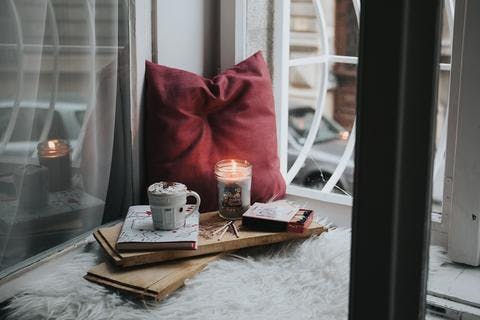How to create a bedtime routine

Sleep is imperative to our health and well-being. According to the Sleep Health Foundation, research has shown that you’re more likely to retain information and perform better on memory tasks after a good night’s sleep. Sleep is also responsible for rejuvenating our bodies, enabling us to grow muscle, repair tissue and produce hormones.
Creating a quiet, relaxing bedroom oasis may help you enjoy a more restful sleep. Relax an overexcited mind and train your body to unwind with a regular bedtime routine.
1. Write down your reminders for the next day
We’ve all experienced it before – tossing and turning in bed because we can’t switch off our thoughts. Stress is known to increase the production of cortisol, making it harder to fall and stay asleep. Create a buffer before bed time by jotting down your thoughts and/or plans for the next day in a notebook. This will assist in unloading your thoughts prior to entering your sacred sleeping space and prevent you from forgetting something important for the next day.

2. Avoid caffeine before bed
According to the Sleep Health Foundation caffeine is a stimulant, making us feel more alert by inhibiting the chemicals in the brain which induce sleep. Caffeine can affect our brain and behaviour for up to 3 to 7 hours after consumed, so it is recommended you avoid all forms of caffeine such as tea, coffee and soft-drink for at least a few hours before bed.

3. Switch Off
As tempting as it may be to bring electronics into the bedroom, it is always a good idea to cease using them for at least one hour before sleep. Watching TV, using your computer or mobile phone stimulates the brain, making it harder to drift off to sleep. If you are finding it difficult to separate yourself from your mobile, opt for the blue light filter and dim the screen brightness.

4. Relax
Find a relaxation technique which works for you such as guided meditation or breathing exercises. Practise this regularly before sleep to signal to your body that it’s time to settle down. By redirecting your attention to your breathing and body, you are more likely to induce sleep. If meditation or breathing techniques aren’t for you, try reading a book or listening to calming music.

5. Adjust your room temperature
When setting yourself up for sleep, ensure your bedroom is quiet, dark and the correct temperature. According to the Sleep Council, the ideal room temperature is 18 degrees. A naturally lower core temperature is one of the signals the body uses to start melatonin production and drift off to sleep. This is a lot easier to achieve in the winter months, but if the air temperature is above this range, you could try opening a window, having a shower 30 minutes before bed or going for a short walk outside to get some fresh air.

Consistency and routine can be important to your quality of sleep. Having a regular bedtime routine is more likely to help you fall asleep easily at night with little to no interruptions. We hope our tips will help you relax after a long, hard day and experience a restful sleep. If you are wanting to upgrade to current bed to something a bit comfier, view our large range of beds and bedding at Snooze. To learn more about your sleep cycle, please view our article here.
References:
1. https://www.sleepfoundation.org/articles/why-do-we-need-sleep
2. https://www.sleepfoundation.org/insomnia/treatment/what-do-when-you-cant-sleep
3. https://www.sleep.org/articles/design-perfect-bedtime-routine/
4. https://www.nosleeplessnights.com/sleep-hygiene/bedtime-routine-for-adults/
5. https://coach.nine.com.au/latest/how-to-sleep-better/9c04152d-16e4-43ac-ac3a-27189eeb178a
6. https://www.sleephealthfoundation.org.au/caffeine-and-sleep.html
7. https://sleepcouncil.org.uk/perfect-sleep-environment/